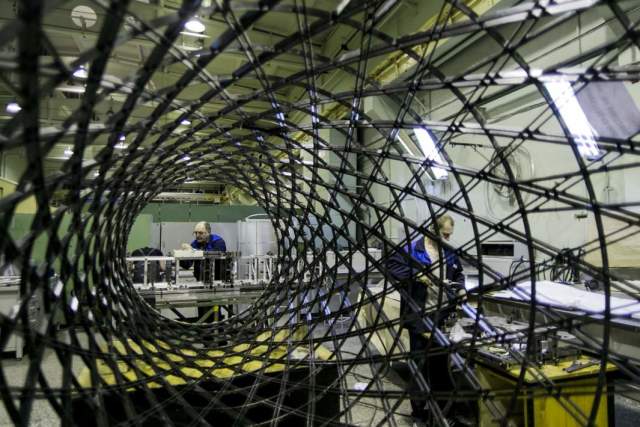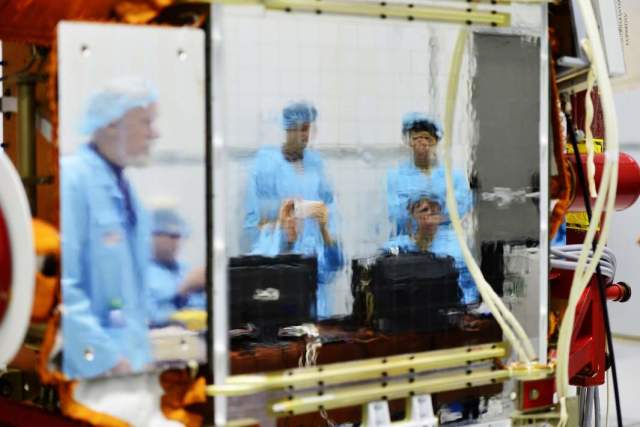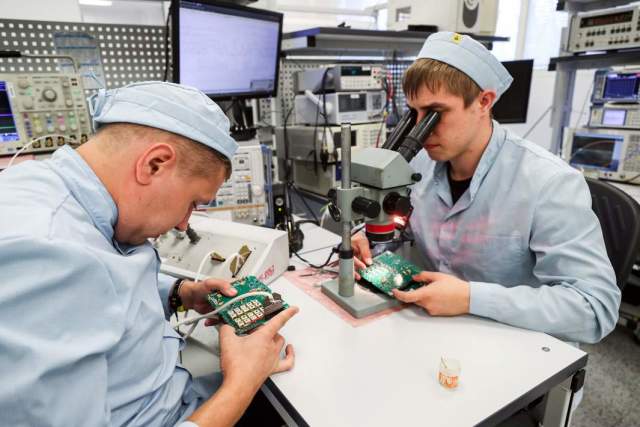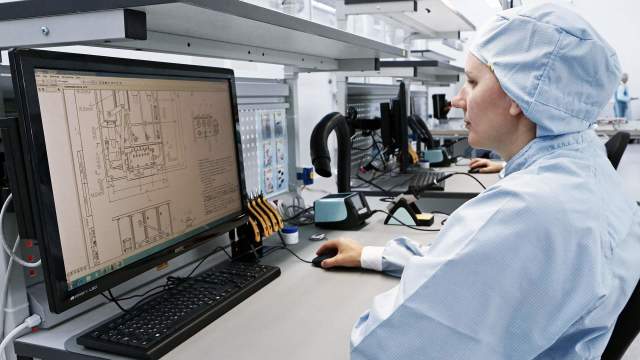How a new technology for low-orbit groupings will help provide the Internet to the whole Earth
Russian designers are developing a propulsion system for satellites designed to operate in low orbits. At an altitude of about 200 km, there are still remnants of the atmosphere that causes resistance, so the spacecraft engine must work continuously. The peculiarity of the system is that it does not need fuel and uses gases for operation, which it takes from the environment. The technology will allow the creation of satellite groupings that will be able to cover the entire surface of the Earth with communication networks. According to experts, designing spacecraft to operate at such altitudes is the most urgent task today. Higher orbits are captured by commercial companies, and their equipment can stay there for many years.
Flight of thought
Specialists of the Moscow Aviation Institute (MAI), together with colleagues from Moscow State University, are working on the creation of a propulsion system for spacecraft designed to operate in low orbits with a height of about 200 km. It will be able to create thrust using atmospheric gases — nitrogen and oxygen, which are still stored at a given distance from the Earth. The duration of operation of such a system, unlike traditional propulsion systems, is not limited by the fuel reserve. Its application will reduce the size and cost of satellites for such heights, which will also reduce the cost of their removal into near-Earth space.
— We intend to use the remnants of the atmosphere that exist at these heights. To do this, you need to capture the flow of gases running into the satellite, compress it and feed it into the engine, where it will turn into plasma under the influence of electric energy received from solar panels. By acting on the plasma with electric fields, it is possible to accelerate ions and thus obtain reactive thrust," said Alexander Bogatyi, senior researcher at the Research Institute of Applied Mechanics and Electrodynamics of the MAI.

Photo: TASS/Evgeny Kurskov
Image source: iz.ru
The installation that scientists are working on includes the engine itself, which creates thrust, a system for collecting atmospheric gases, as well as a power supply and control system. The first two components have already been created, but they have not yet been combined into a single mechanism. The specific parameters of the devices will depend on the size and shape of the spacecraft and its orbit. However, now engineers are considering the level of power consumption up to 1 kW. According to their estimates, if the actual scientific and technical problems are successfully solved, the development can be brought to the prototype stage within five to seven years.
As the designers explained, placing spacecraft in low orbit opens up many new possibilities. For example, satellites from such a height could directly provide communications to subscribers without the need to use base stations. This would allow the Internet to "cover" the entire globe. However, so far no State in the world has the technical capabilities to implement these plans.
The engines that will be used for such satellites should have a higher resource than those used in high orbits. This is necessary, since at a distance of about 200 km from the Earth, the spacecraft experiences significant resistance from the residual atmosphere, therefore it must work continuously. In addition to creating a reliable propulsion system, it is also necessary to develop an appropriate electronic stuffing for low-orbit devices. Work in these areas is underway in many countries, and sooner or later such technologies will appear.

Photo: TASS/Yuri Smityuk
Image source: iz.ru
The cost of the developed installation will be comparable to the price of plasma and ion engines currently widely used in satellites. At the same time, the device will have advantages over them, since it does not require storing on board the satellite the stocks of substances necessary for its operation.
Two problems
For the successful completion of the work, MAI scientists will have to solve two key problems. Firstly, the speed of the satellite in low orbit is 8 km/s. To test the installation, it is necessary to artificially recreate these conditions. However, wind tunnels give a flow rate of up to a maximum of 4 km/s. You can use an electric rocket engine to disperse the air, but it creates a flow at a speed of about 100 km/s, which is too fast.
Secondly, the plasma into which gases are converted in the installation conducts electricity very well. And high voltage is used to disperse particles in the engine. The structure itself is made of metal, so if the kilovolts from the plasma are closed to the body of the spacecraft, this will lead to an accident. The developers have an understanding of how to solve these issues, but it will take time and hard work, the developers noted.

Photo: TASS/Sergey Savostyanov
Image source: iz.ru
The creation of a new engine for satellites in low orbits is an even more urgent task than the development of the Starship spacecraft by Elon Musk, Andrei Ionin, corresponding member of the Russian Academy of Cosmonautics, is sure. Currently, multi-satellite communication systems are being created by commercial companies in orbits of 500 km and above. There is no international regulation in the near-Earth space belonging to all mankind, and it is simply captured by a huge number of private satellites, he noted.
— The deployment of such groups in orbits above 500 km creates very high risks, since the satellites remain there for years and even decades. Therefore, strict regulation should be introduced at this height. There shouldn't be thousands of spacecraft there. The two-hundred-kilometer orbit is self-cleaning. Without a working engine, a satellite can make one revolution along it and then burn up in the atmosphere, so only such orbits can be used for numerous commercial groupings," Andrei Ionin said.
According to the expert, the engine development period of five to seven years is too long, it is necessary to speed up the process.
It is too early to talk about the economic feasibility of the propulsion system before the start of operation, since the declared characteristics can only remain on paper, believes Alexander Zheleznyakov, an expert in the space industry.
Denis Gritsenko

